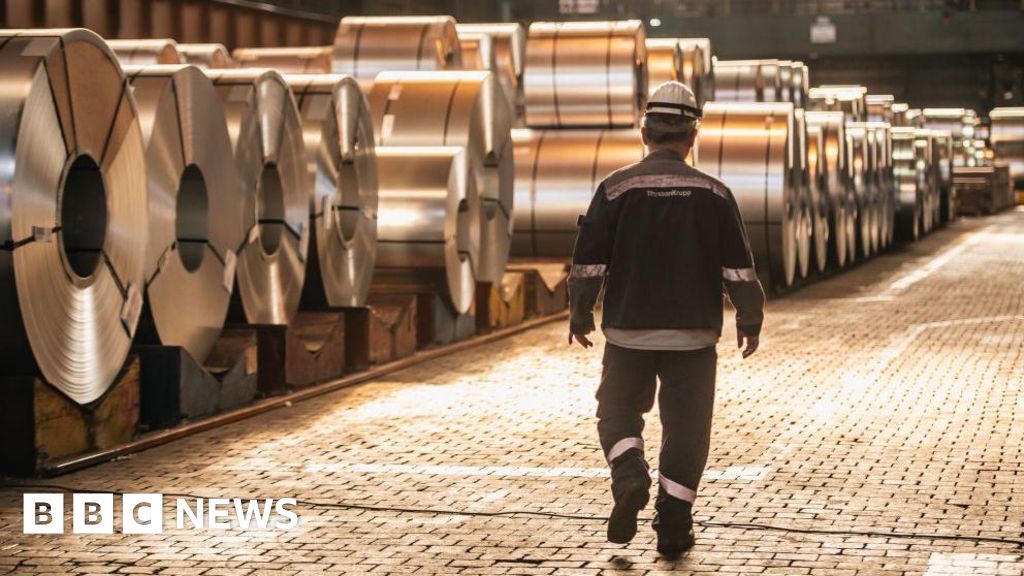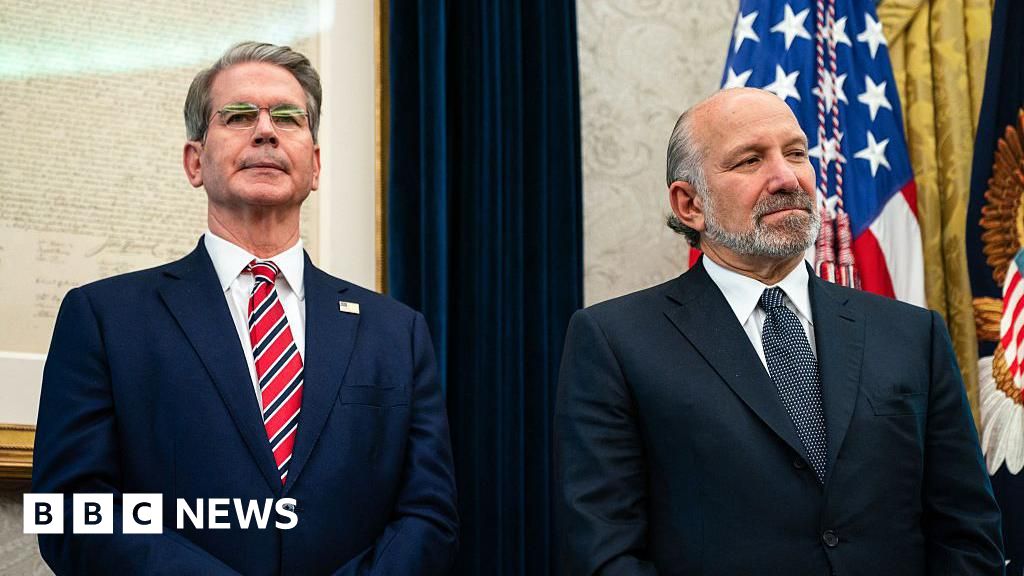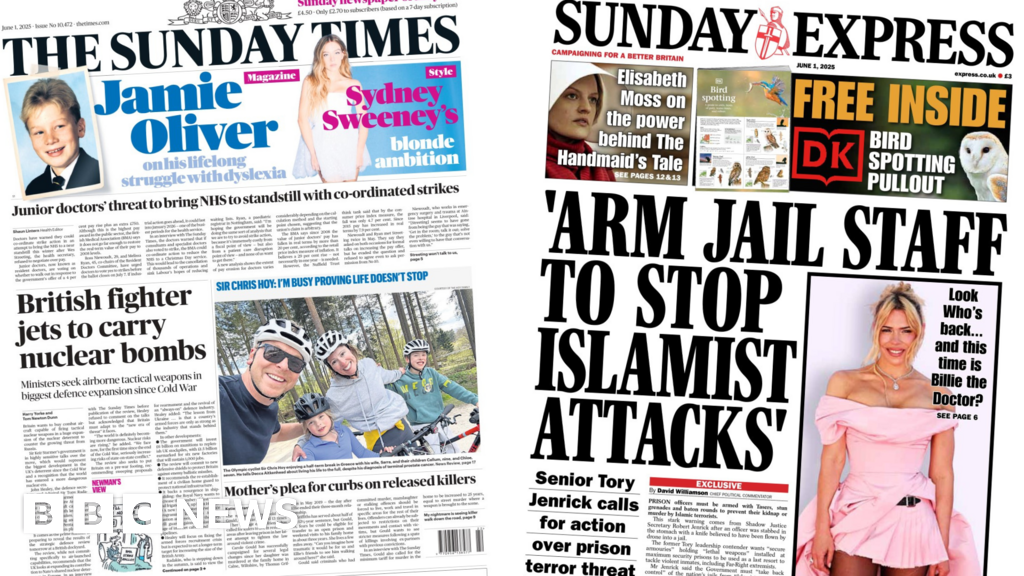- Investing
US banks announce big shareholder payouts as Fed eases stress tests
时间:2010-12-5 17:23:32 作者:Editorial 来源:Live 查看: 评论:0内容摘要:, 10 years after an onslaught by the Islamic State group led to the killings, abductions and displacement of thousands of Yazidis., 10 years after an onslaught by the Islamic State group led to the killings, abductions and displacement of thousands of Yazidis.
Water bottles by Italian company You Bottles, in collaboration with street artist Banksy, are displayed at the Ambiente homewares trade fair in Frankfurt, Germany in Feb. 2025. (Kim Cook via AP)Water bottles by Italian company You Bottles, in collaboration with street artist Banksy, are displayed at the Ambiente homewares trade fair in Frankfurt, Germany in Feb. 2025. (Kim Cook via AP)

It’s all a far cry from the mundane mugs of yesteryear.An early maker of light, plastic water bottles was Nalge, in Rochester, New York, which found that the unbreakable containers it was making for science laboratories in the ’60s were being used by employees on backpacking trips. The Nalgene reusable water bottle soon went on the market.Hundreds of plastic and bioplastic versions from various makers have been joined over the decades by stainless steel and aluminum versions, with as many iterations of the lids – straws, screw-ons, flip-ups.

Insulated BioLoco water bottles by German brand Chic.Mic are displayed at the Ambiente homewares trade fair in Frankfurt, Germany in Feb. 2025. (Kim Cook via AP)Insulated BioLoco water bottles by German brand Chic.Mic are displayed at the Ambiente homewares trade fair in Frankfurt, Germany in Feb. 2025. (Kim Cook via AP)

The tech keeps evolving, says Bleyer. “I’ve seen and tested everything from filtering water bottles to the Air Up, which uses flavor pods to enhance the taste, as well as newer options that carbonate your water or track your sips.”
Self-cleaning bottles could be helpful in countries or wilderness areas where water quality is questionable. Philips’ GoZero UV Self-Cleaning Smart Water Bottle got top ratings in Men’s Health magazine’s testing lab for self-cleaning bottles. Its month-long battery life might make it useful for off-grid camping or trekking. LED technology automatically sanitizes the bottle every two hours, or whenever you push the cap button., the CDC and others. As a result, some school districts have shifted to later start times. Two states — California and Florida — have passed laws that require high schools to start no earlier than 8:30 a.m. But simply telling a teenager to get to bed earlier doesn’t always work, as any parent can attest: They need to be convinced.
That’s why Mansfield City Schools, a district of 3,000 students in north-central Ohio, is staging what it calls “a sleep intervention.”The district’s high school is piloting the new curriculum, “Sleep to Be a Better You,” hoping to improve academic success and reduce chronic absences, when a student misses more than 10% of the school year. The rate of students missing that much class has decreased from 44% in 2021 but is still high at 32%, says Kari Cawrse, the district’s attendance coordinator. Surveys of parents and students highlighted widespread problems with sleep, and an intractable cycle of kids going to bed late, oversleeping, missing the school bus and staying home.
The students in Davis’ classroom shared insights into why it’s hard to get a good night’s sleep. An in-class survey of the 90 students across Davis’ five classes found over 60% use their phone as an alarm clock. Over 50% go to sleep while looking at their phones. Experts have urged parents for years to get phones out of the bedroom at night, but national surveys show most teens keep their mobile phones within reach — andDuring the six-part course, students are asked to keep daily sleep logs for six weeks and rate their mood and energy levels.
- 最近更新
- 2025-07-07 05:02:00US and Iran to talk next week as ‘war done’ with Israel: Trump
- 2025-07-07 05:02:00Are airlines stopping flights to Middle East amid soaring tensions?
- 2025-07-07 05:02:00Gout Gout breaks own 200m record; beats Bolt’s Golden Spike debut time
- 2025-07-07 05:02:00Russia no longer needs Iran’s help to sustain the war in Ukraine
- 2025-07-07 05:02:00Will Trump’s Israel-Iran ceasefire really hold?
- 2025-07-07 05:02:00French air traffic control strikes cause flight delays across Europe
- 2025-07-07 05:02:00Why workplace anger is misunderstood
- 2025-07-07 05:02:00Trump says US will speak to Iran next week and ‘may’ sign a nuclear deal
- 热门排行
- 2025-07-07 05:02:00Nathan Ambrosioni Finds Sympathy for ‘Bad Mothers’ in Camille Cottin Starrer ‘Out of …
- 2025-07-07 05:02:00Trump says US will speak to Iran next week and ‘may’ sign a nuclear deal
- 2025-07-07 05:02:00qualify you for low-mileage discounts
- 2025-07-07 05:02:00Israel kills 72 in Gaza, including hungry Palestinians waiting for food
- 2025-07-07 05:02:00timing of claiming Social Security benefits
- 2025-07-07 05:02:00Wildfire on Greek island of Crete forces evacuation of 1,500
- 2025-07-07 05:02:00our guide to fixed and variable rates
- 2025-07-07 05:02:00Trump’s megabill advances to final yes-or-no vote
- 友情链接
- Federal investigation finds Harvard violated civil rights law The US can beat China on critical minerals but not by copying it The fall in the dollar is not scary Iran ‘needs more time’ to decide on resuming nuclear talks with US Working hard to look busy: why young employees are ‘task masking’ Bank seeking to impose unified approach on sprawling global workforce Six men stand accused of taking part in London attack allegedly backed by Russian mercenary group Real-World Evidence for Oncology Innovation in Europe Jury retires to consider verdict in Wagner Group arson case Remembering war correspondent Rod Nordland Looking forward to July 4 fireworks? Tariffs may take the spark out of your fun A Supreme Court decision that strengthens presidential power Young workers getting to the top, managing crises, and advice on leading holistically How the ‘rebel alliance’ took on Starmer over welfare — and won Can Starlink stay ahead in satellite internet? Smythson, UK maker of £185 diaries, snapped up by private equity firm Starmer guts UK welfare reforms to avoid Commons defeat Berlin increases controls on vessels heading eastward through the Fehmarn strait Thirty-nine MPs back new amendment designed to kill bill ahead of Tuesday vote The fall in the dollar is not scary Japanese politics & policy Waffle House drops egg surcharge as prices fall back to Earth After abandoning its IPO plans, fintech Klarna transforms its business model Private equity’s big tax perk is the one that got away — again HTSI. The undiluted delight of a pastis apéro Senior managers at Lucy Letby hospital arrested Wall Street titans to raise dividends and buy back shares on back of lighter oversight Remembering war correspondent Rod Nordland DOJ announces a record-breaking takedown of health care fraud schemes After abandoning its IPO plans, fintech Klarna transforms its business model
